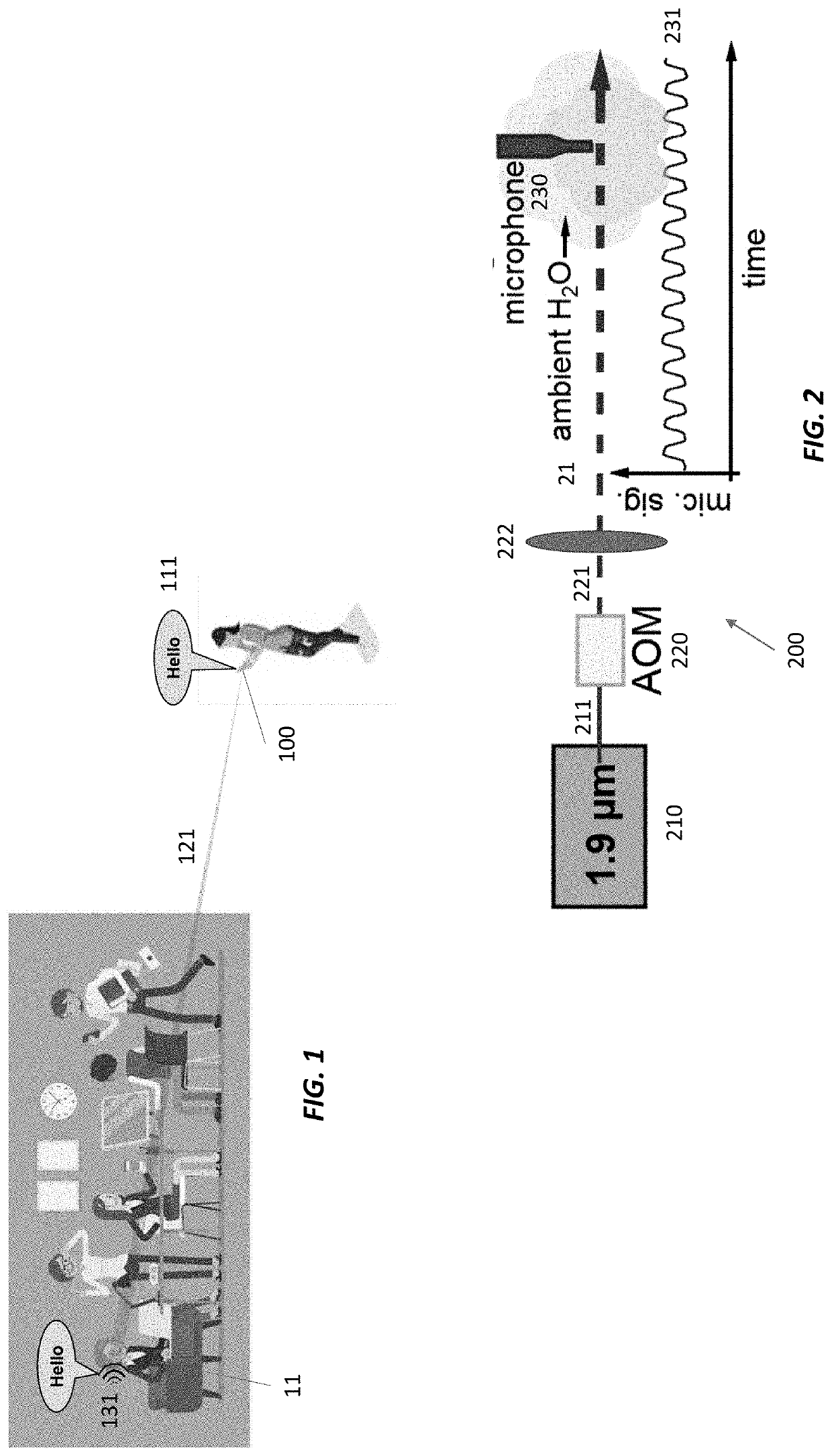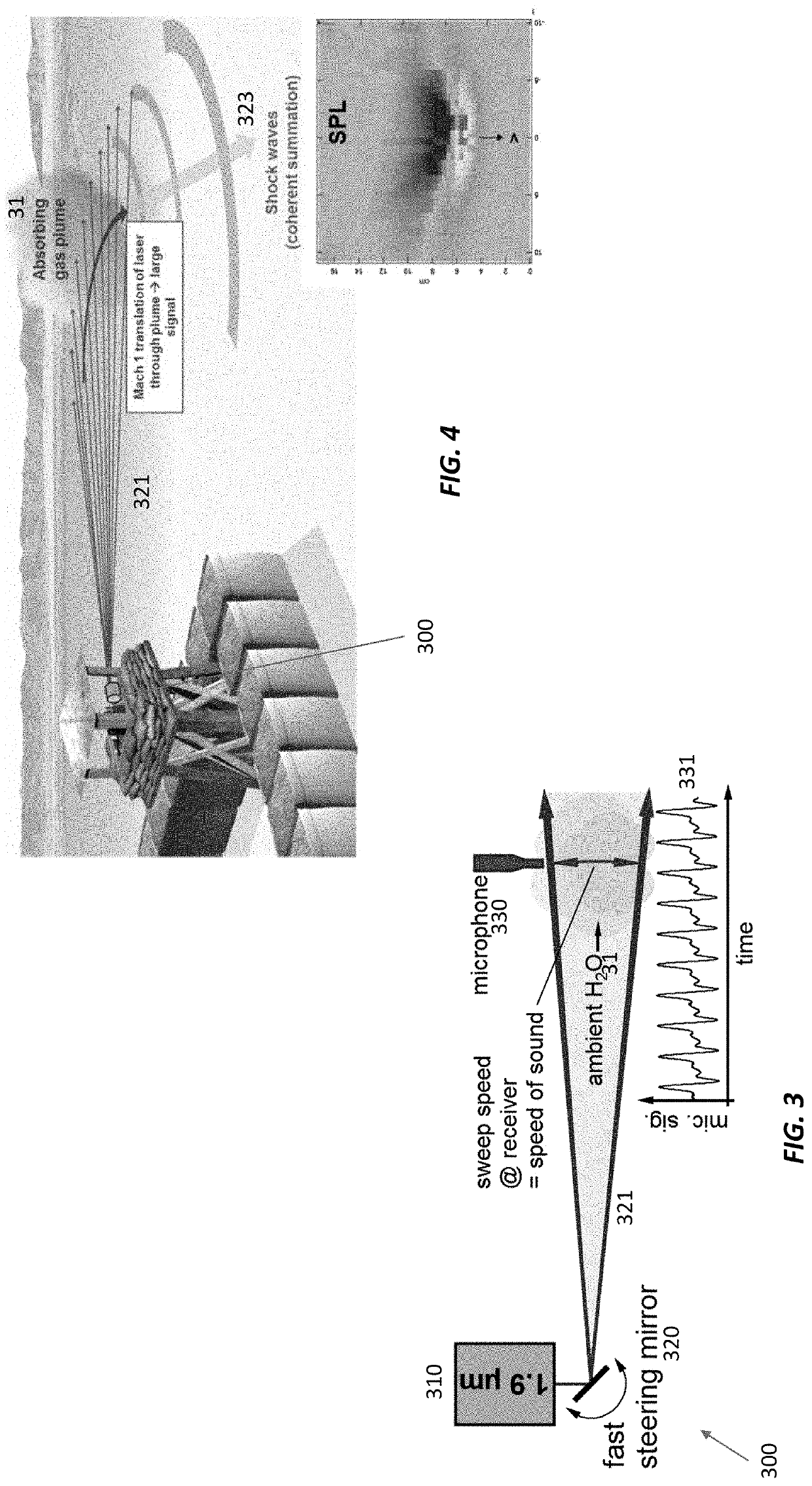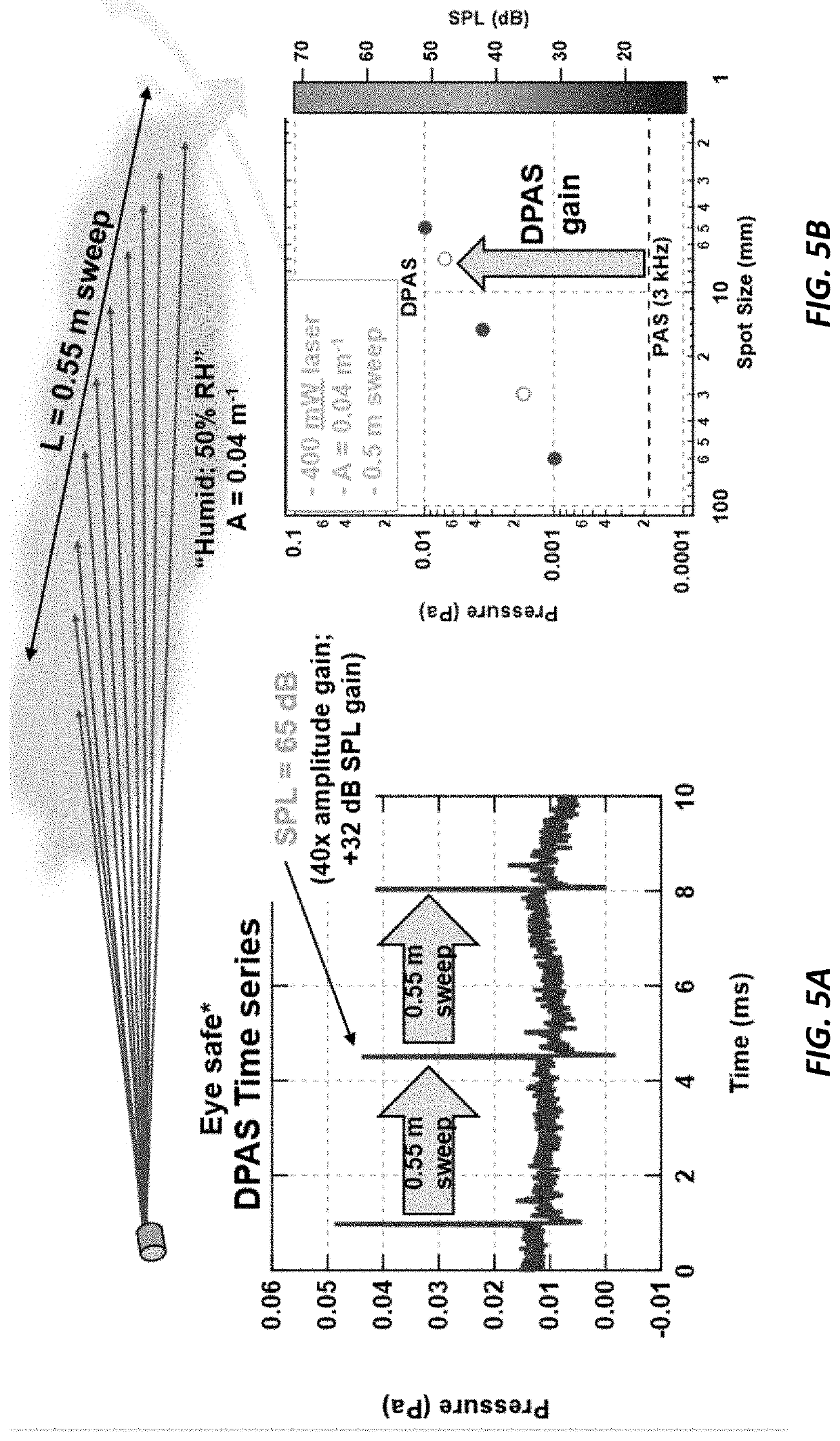Methods and Apparatus for Acoustic Laser Communications
a laser communication and laser technology, applied in the field of acoustic laser communication methods and equipment, can solve the problems of limited means of transmitting audio, no one can localize and safely etc., and achieve the effect of safe direct information to a single user
- Summary
- Abstract
- Description
- Claims
- Application Information
AI Technical Summary
Benefits of technology
Problems solved by technology
Method used
Image
Examples
Embodiment Construction
[0039]In one implementation of photoacoustic communications, a transmitter communicates with a ‘disadvantaged receiver’ (a person without any electronic or mechanical detectors) using a modulated laser beam transmitted toward the receiver's ear. The optically encoded information is converted into an acoustic message via the photoacoustic effect. The photoacoustic conversion of the optical information into an audible signal can occur via one of three modalities: (1) absorption of the light by an ambient gas species (e.g., water vapor) in the near area of the receiver's ear; (2) absorption of light by the receiver's skin and subsequent transmission to the inner ear; or (3) photoacoustic coupling to a nearby object of opportunity (e.g., a window or nearby vessels of fluid) followed by airborne acoustic transmission across a relatively short distance to the receiver. For each modality, the disadvantaged receiver hears the audible signal with his or her ear. The generation of the acousti...
PUM
| Property | Measurement | Unit |
|---|---|---|
| wavelength | aaaaa | aaaaa |
| frequency | aaaaa | aaaaa |
| RH | aaaaa | aaaaa |
Abstract
Description
Claims
Application Information
 Login to view more
Login to view more - R&D Engineer
- R&D Manager
- IP Professional
- Industry Leading Data Capabilities
- Powerful AI technology
- Patent DNA Extraction
Browse by: Latest US Patents, China's latest patents, Technical Efficacy Thesaurus, Application Domain, Technology Topic.
© 2024 PatSnap. All rights reserved.Legal|Privacy policy|Modern Slavery Act Transparency Statement|Sitemap



